Create a Classroom Management Plan for Effective Behavior
Click above to listen to this podcast episode: “Creating a Classroom Management Plan to Increase Student Engagement”
Creating a well-designed and effective classroom management plan is essential to fostering a productive learning environment. For new teachers, particularly those unfamiliar with student-centered models, developing a solid classroom management plan might seem daunting. However, by focusing on the core elements of classroom rules, student engagement, behavior management, and setting clear expectations, teachers can establish a well-managed classroom where students thrive.
The key is to implement strategies that promote positive behavior while addressing student misbehavior swiftly and effectively.
A well-constructed classroom management plan acts as the foundation for everything that happens in the classroom, from daily routines to fostering a positive learning atmosphere. One of the primary goals is to create a structured environment where students understand the rules and expectations. Clear, simple classroom rules should be established from the start, ideally on the first day of school.
These rules should not only reflect the teacher’s values but also involve student input when possible, which helps build a sense of shared responsibility and ownership. When students feel involved in setting classroom norms, they are more likely to adhere to them, which in turn reduces behavioral issues.
Moreover, student engagement is critical to a well-managed classroom. When students are actively participating in lessons and feel that their contributions matter, they are less likely to engage in disruptive behavior. Strategies such as incorporating group work, encouraging collaborative learning, and using a variety of teaching methods to cater to different learning styles can keep students focused and motivated. Engaged students are often better behaved, as they are less inclined to act out when they are interested in the material.
The Purpose of a Classroom Management Plan
The primary purpose of a classroom management plan is to create a classroom environment that supports student learning while minimizing behavioral problems. A good classroom management plan provides structure, establishes clear expectations, and fosters a positive learning environment where students know what is expected of them. It helps teachers prevent disruptive behavior by promoting a cooperative agreement between the teacher and students, creating a sense of shared responsibility.
This plan should not be just a list of rules but rather a roadmap that outlines how the classroom will run, including classroom procedures, routines, and methods for encouraging positive behavior. It also includes strategies for handling inappropriate behavior and sets the foundation for positive reinforcement and negative consequences.
An essential part of any effective classroom management plan is knowing how to handle misbehavior when it occurs. It’s unrealistic to expect that a classroom will run smoothly at all times, especially in a student-centered model where students have more autonomy. Therefore, it’s crucial for teachers to address behavioral issues quickly and consistently, while maintaining a positive, respectful demeanor. Consequences for misbehavior should be outlined from the beginning and should be applied consistently to all students. This helps create a fair, predictable environment where students understand that there are clear boundaries.

(This post may contain affiliate links that won’t change your price but will share some commission. As an Amazon Associate, I earn from qualifying purchases. Please read our disclosure policy for more information.)
In addition to addressing misbehavior, positive reinforcement should be a central strategy in classroom management. Recognizing and rewarding good behavior—whether through verbal praise, a rewards system, or public recognition—can be a powerful motivator for students. Positive reinforcement not only encourages the individual student but also serves as a model for the rest of the class, creating a supportive environment where positive behavior is the norm.
Why a Well-Managed Classroom Matters
In any grade level, whether you’re managing elementary students or a high school classroom, classroom management directly impacts the quality of student learning. Without proper management, teachers can quickly lose control of their classroom, leading to chaos, disengagement, and behavioral issues. In a well-managed classroom, students are more likely to be focused, attentive, and engaged in the learning process, leading to better academic outcomes.
Furthermore, a classroom environment where students understand the expectations and consequences fosters student success. When students feel that they are in a safe, structured, and supportive environment, they are more likely to take risks in their learning, participate actively, and develop critical thinking skills. As an effective teacher, your ability to establish and maintain a well-managed classroom will have long-term positive effects on your students’ educational journeys.
Ultimately, by combining clear rules, student engagement strategies, consistent behavior management, and positive reinforcement, teachers can create a classroom environment where students feel valued, respected, and motivated to succeed. With these core elements in place, new teachers can feel more confident in their ability to manage their classrooms effectively, even if they are unfamiliar with student-centered models.
Setting the Stage on the First Day of School
The first day of school is crucial for setting the tone of the entire year. It’s essential to start with clear classroom rules and procedures. Some teachers make the mistake of focusing solely on their lesson plans, overlooking the importance of setting up their classroom management plan from the very start. However, without a solid foundation of expectations, no lesson plan—no matter how well-designed—can be effectively delivered.
A great way to begin is by introducing students to the classroom rules and expectations in a manner that is both engaging and clear. One successful approach is involving students in the creation of classroom rules. This can be done through group work where the entire class participates in brainstorming the rules they believe are fair and conducive to a positive learning environment. When students take part in creating the classroom expectations, they are more likely to adhere to them because they feel a sense of ownership.
For instance, on the first day of school, you can ask students to reflect on the type of classroom environment they believe is best for learning. Then, together as a class, develop a list of rules that reflect those values. This cooperative agreement can serve as the basis for your classroom management plan and provide a strong foundation for student engagement.
Classroom Procedures for Success
Having well-established classroom procedures is a crucial element of any good classroom management plan. Classroom procedures ensure that the classroom runs smoothly and that students understand the routines they need to follow throughout the school day. These procedures help minimize downtime, which often leads to behavioral problems, and they give students a sense of structure and predictability.
For example, classroom procedures might include routines for:
- Starting class
- Turning in assignments
- Moving between activities
- Using classroom supplies
- Handling personal items
- Group work protocols
- Responding to emergencies, such as fire drills or lockdowns
- Lining up or transitioning between different parts of the classroom or school
- Procedures for addressing behavioral issues
By establishing clear procedures from the very beginning, teachers can prevent many common disruptions and create a calm and orderly classroom environment. Teachers should also remember that classroom procedures need to be taught, modeled, and practiced consistently. It’s not enough to simply tell students what to do—teachers need to show them and give them opportunities to practice these procedures, especially during the first week of school.
For instance, when teaching elementary students how to transition from one activity to another, it’s helpful to practice the process repeatedly in those first few days. This might involve rehearsing how students should line up at the door, how they should move quietly between different learning stations, or how they should store their personal items at the start of class. For high school classrooms, procedures might involve how students are expected to handle late work, how to submit assignments electronically, or how to engage in respectful discussion during group work.
Managing Student Behavior and Power Struggles
Behavioral issues are inevitable in any classroom, no matter how effective the teacher may be. However, the key to handling these issues lies in how you respond to them. Managing student misbehavior requires a combination of positive reinforcement, negative consequences, and clear communication of expectations.
One common mistake new teachers make is reacting emotionally when student misbehavior occurs. Instead, it’s essential to remain calm, collected, and consistent in your response. For example, if a student disrupts class, rather than immediately reacting with frustration, refer back to your set of rules and consequences. This approach reinforces that the classroom rules are in place to maintain a positive learning environment and that inappropriate behavior will not be tolerated.
It’s also important to avoid getting into power struggles with students. These situations often arise when teachers try to assert their authority in a way that challenges a student’s autonomy. Instead of engaging in a confrontation, use strategies that de-escalate the situation. For example, if a student is arguing about a rule, calmly reiterate the rule and the consequences without engaging in a back-and-forth debate. Giving the student space to comply without feeling cornered can help defuse the situation without escalating it into a power struggle.

Additionally, creating an environment of positive reinforcement helps reduce behavioral problems. Praise students for following the rules, for participating actively, and for contributing to a positive learning environment. Positive feedback, whether in the form of verbal praise, a note sent home, or public recognition, encourages students to continue exhibiting good behavior.
Positive Reinforcement and Consequences
Positive reinforcement is one of the most effective strategies for promoting good behavior in the classroom. Reinforcing positive behavior through praise or rewards encourages students to continue doing the right thing. For younger students, using a star chart or a system of raffle tickets for good behavior can be particularly motivating. These systems are simple to implement, but they provide consistent feedback to students, showing them that their efforts are appreciated.
For older students, especially in high school classrooms, positive reinforcement might involve different types of recognition, such as leadership roles, special privileges, or verbal praise. While high school students may not respond as readily to rewards like stickers or star charts, they do appreciate acknowledgment of their hard work and positive behavior.
On the flip side, teachers must also be prepared to implement negative consequences when students break the rules. A well-designed classroom management plan includes a set of consequences that are clearly communicated to students from the beginning. These consequences should be fair, consistent, and proportional to the behavior. Whether it’s losing recess time for elementary students or a phone call home for older students, the consequences should be predictable and consistently applied to maintain a sense of fairness.
However, consequences should always be paired with opportunities for students to learn from their mistakes. For example, if a student disrupts class, rather than simply punishing the behavior, take time to talk with the student about why the behavior was inappropriate and how they can make better choices in the future. This approach helps the student reflect on their own behavior and teaches them strategies for self-regulation, which is a critical component of successful classroom management.
Building a Supportive Environment and Positive Relationships
Classroom management is about more than just controlling behavior—it’s about creating a positive and supportive environment where students feel valued, respected, and motivated to succeed. Building positive relationships with students is an essential part of this process. When students feel connected to their teacher, they are more likely to exhibit positive behavior, engage in learning, and work toward their academic goals.
One way to build positive relationships is by taking the time to get to know individual students and their unique needs. Whether it’s learning about their interests outside of school, offering encouragement when they’re struggling, or simply showing them respect in everyday interactions, these small gestures can have a big impact on the classroom dynamic.
In addition, fostering a classroom community through group activities, morning meetings, or collaborative projects can help students build positive relationships with each other. When students feel a sense of belonging and connection with their peers, they are more likely to work cooperatively and support each other’s learning. This also reduces behavioral issues, as students are less likely to act out when they feel they are part of a supportive community.
Dealing with Disruptive Behavior and Difficult Situations
Despite your best efforts to establish a positive learning environment, disruptive behavior will occasionally occur. The key is to be prepared with strategies to address these behaviors without losing control of the classroom.
One strategy is to implement non-verbal signals to get students’ attention. For example, many teachers use a bell, chime, or even a wireless doorbell to signal when it’s time for students to stop talking and refocus. This eliminates the need to raise your voice or repeat instructions multiple times, which can lead to frustration and further disruption.
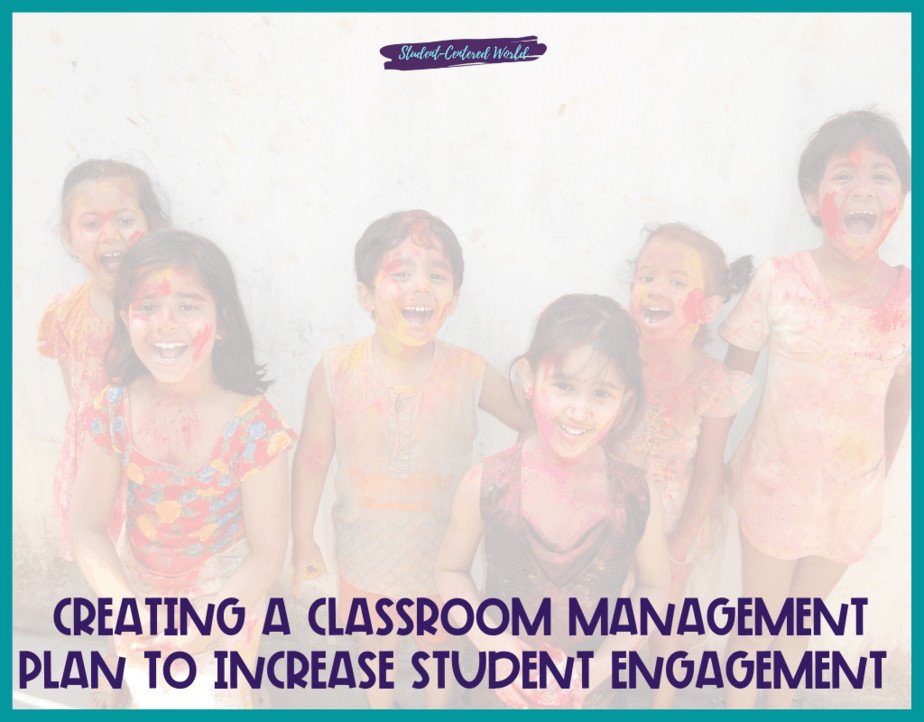
Another effective strategy is to use proximity to manage behavior. Simply moving closer to a student who is off-task or disruptive can often be enough to redirect their attention without calling them out in front of the entire class. This subtle form of behavior management helps maintain the flow of the lesson while addressing the issue quietly and respectfully.
For more serious behavioral problems, it’s important to follow the consequences outlined in your classroom management plan. However, it’s equally important to remain empathetic and understanding, especially when dealing with difficult situations. Some students may act out due to underlying issues, such as personal struggles, academic frustration, or social challenges. Taking time to understand the root of the behavior can help you respond more effectively and support the student in making positive changes.
Incorporating Active Participation and Group Work
In a student-centered classroom, active participation and group work are essential components of the learning process. These activities encourage collaboration, critical thinking, and deeper engagement with the material. However, managing group work can be challenging, especially when it comes to maintaining order and ensuring that all students are participating equally.
One strategy for managing group work effectively is to establish clear roles and responsibilities for each group member. By assigning specific tasks, such as a group leader, recorder, or timekeeper, you can ensure that all students are contributing to the activity. This also helps prevent any one student from dominating the discussion or others from disengaging.
It’s also important to provide clear expectations for group behavior. Before starting the activity, review the guidelines for working together, such as listening to others, staying on task, and respecting each other’s ideas. By setting these expectations upfront, you can minimize off-task behavior and create a more productive learning environment.
Finally, monitoring group work and providing feedback throughout the process is crucial. Circulating the room, offering guidance, and checking in with individual groups ensures that students stay focused and on track. Positive reinforcement during group work, such as praising a group for their cooperation or recognizing their hard work, can also motivate students to continue working effectively together.
Implementing a Well-Designed Classroom Management Plan
At the core of any successful classroom management strategy is a well-designed classroom management plan. This plan should be comprehensive, covering everything from classroom rules and procedures to behavior management strategies and consequences. It should be flexible enough to adapt to the unique needs of your students and your teaching style while maintaining a clear structure that promotes positive behavior and student success.
A good classroom management plan should include:
- Classroom Rules: A clear set of rules that outline the expectations for behavior in the classroom. These rules should be simple, easy to understand, and consistently enforced.
- Classroom Procedures: Established routines for various parts of the school day, such as starting class, transitioning between activities, and handling classroom supplies.
- Positive Reinforcement: Strategies for rewarding good behavior, such as praise, rewards, or privileges.
- Consequences for Misbehavior: A set of consequences that are fair, consistent, and proportional to the behavior. These consequences should be communicated clearly to students from the beginning.
- Group Work Strategies: Guidelines for managing group work, including roles and responsibilities for group members.
- Emergency Procedures: A plan for handling emergencies, such as fire drills or lockdowns, that ensures student safety and minimizes disruption.
By developing a comprehensive classroom management plan and implementing it consistently, teachers can create a positive, well-managed classroom where students are motivated to learn, behave appropriately, and succeed academically.
Adjusting Your Classroom Management Plan
While having a solid classroom management plan is crucial, it’s equally important to remain flexible and willing to make adjustments as needed. Throughout the school year, you may find that certain strategies are more effective with some students or classes than others. Being willing to make slight adjustments to your approach based on the dynamics of your classroom can make a significant difference in maintaining a well-managed classroom.
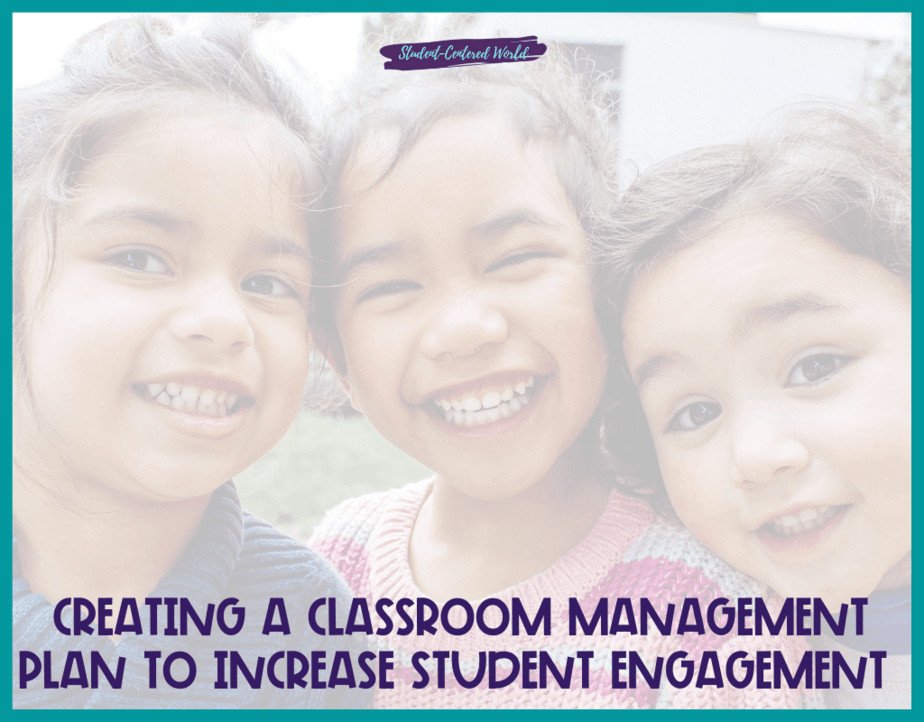
For example, if you notice that certain students are struggling to follow the established classroom rules, consider providing additional support or making accommodations to help them succeed. This might involve breaking down tasks into smaller steps, offering more frequent positive reinforcement, or providing individualized attention during group work. Similarly, if a particular procedure isn’t working as smoothly as expected, don’t be afraid to revise it and try a different approach.
Additionally, consider seeking feedback from your students. Asking for their input on what’s working and what’s not can provide valuable insights into how to improve your classroom management plan. It also reinforces the idea that classroom management is a shared responsibility between the teacher and students, further promoting a positive and collaborative learning environment.
Quick Strategies for a solid classroom management plan
The first two items below are two of my favorite to use in the classroom and are easily implemented as strategies for getting students’ attention as part of a good classroom management plan. It is up to you to determine which one your students might respond to better. I have seen them both work in different classrooms with different groups of students with great results.
Only you know what will work best in your classroom and what you can implement with the most consistency. They are not necessarily one-size-fits-all, but I have seen them used from preschool all the way up to seniors in high school, so there is no age requirement for either.
So without further ado, here are the two items that are absolute must-haves in your classroom to keep order.
Zenergy Chime
This chime is hand-activated and creates a nice tone that will help students adjust their focus. There is a soft hum that resonates after it is used, which helps bring together the silence of the room. I have seen some teachers create a system for the number of chimes the students hear and others create a procedure such as all students putting their hands on their heads when they hear the bell.
It is not overpowering and does create a sense of calm. Below is a clip of what it sounds like.
They can be found here on Amazon (ad). Below I have a video of a teacher in an art class with 35 students in it showing the effectiveness of the chime method, as she has called it. One ding and her protocol is for everyone to raise their hands.
Check out how well they do with it (and how loud the chime actually is in a noisy classroom) as part of their understood classroom management plan:
Wireless Doorbell
This thing is LIFE.CHANGING and will have you wondering both “Why didn’t I think of that?!” AND “How did I survive without it?!” This wireless doorbell has the “noise” piece that plugs into an outlet in your classroom and then a button that attaches to your lanyard (or is in a place that you have easy access to…maybe a clipboard you carry around, etc.).
This particular one has 50 different songs that can be played. It is the same idea as the chime method from above, but it is movable, a little louder, and can be changed up by season, activity, etc. Look at this group of students reacting to their teacher ringing his doorbell.
They understand the classroom management plan and it is executed flawlessly by all stakeholders.
The wireless doorbell can be found here on Amazon (ad). This doorbell phenomenon is really becoming the next “big thing” in a classroom management plan and is one of the up-and-coming strategies for getting students’ attention.
The company that produces this particular one, SadoTech, has a great “how-to” video that also shows the excitement of the educators giving it a try.
Again, why didn’t we think of that, right?!
Non-Techy Strategies for Getting Students’ Attention in Your Classroom Management Plan
There are, of course, other strategies for getting students’ attention that do not cost anything but are still very effective for a well-run classroom management plan. These may be a bit old school and will certainly require some student buy-in, but when executed properly, they are also tried and true.
The first idea is asking students in a normal tone of voice, “Raise your hand if you can hear me”. You will have to do this a few times, but as hands go up, more students will notice and will do the same. This takes a bit longer to accomplish as it turns into the trickle effect, but it does get quicker as time passes and students are used to the routine (at the same time, if they are extremely engaged in an activity, it will still take longer to notice).
A second easy idea is to simply turn off the lights. Some teachers flicker them, but that, in theory, could trigger someone with Epilepsy, so I would shy away from that. With this, students will notice that the lights have gone out and that is their sign to quiet down.
The only downfall to this is that the light switch does not travel with you and you will have to make your way to the wall where it is housed each time you wish to get their attention. This may or may not work for you, depending on how your classroom is set up.
Another way to keep your students cognizant of their time is of course by using timers. I love these from Online Stopwatch. There are a ton of different scenarios to set up and the kids pay attention to them because many of them are contests and they, without fail, all want to see if the one they pick ends up winning.
These simple devices and ideas are great strategies for getting students’ attention in the student-centered classroom. While they may be simple, they’re effective when you need to get the attention of everyone in the classroom without the need to lose your voice (or sanity) in the process.
Final Thoughts
Effective classroom management is the cornerstone of a successful teaching experience. By establishing a well-designed classroom management plan that includes clear rules, procedures, positive reinforcement, and consequences, teachers can create a positive learning environment that promotes student engagement, minimizes behavioral issues, and supports student success.
Whether you’re a new teacher just starting or a seasoned educator looking to refine your strategies, focusing on these core elements will help you build a well-managed classroom where students can thrive both academically and behaviorally.
Ultimately, a strong management plan fosters consistency, respect, and collaboration, ensuring long-term student achievement and a classroom atmosphere that supports both individual and group growth. It lays the groundwork for meaningful learning experiences and helps students develop self-regulation and personal responsibility, key skills that contribute to their success beyond the classroom. Teachers who master these strategies create a space where students feel safe, respected, and inspired to reach their full potential.
Stop Driving the Teacher Struggle Bus
Are you struggling with student engagement, apathy, or keeping your class on track?
💫💫 There’s hope! 💫💫
If you’re ready to take the first step towards reviving student engagement and transforming your classroom, I invite you to join me for my free workshop “Reversing Student Apathy” designed to equip educators with innovative strategies that work.
This free teacher workshop offers educators a valuable opportunity to explore and address student apathy. By examining its causes and discussing strategies, participants will learn how to make meaningful changes in their teaching methods that are actually working. The sessions are engaging and collaborative, allowing educators to share experiences and develop a collective approach to improving student engagement.
Highlights include:
- Understanding the roots of student apathy and its impact.
- Strategies for enhancing classroom dynamics.
- The importance of educator-student relationships.
- Innovative teaching approaches for today’s students.
By the end of the workshop, you will not only understand what you need to accomplish to stabilize the 4 pillars of your classroom, but you will also walk away with 5 tangible ideas to try in the classroom the very next day.
Join today to be part of the solution to reigniting student enthusiasm and engagement.
This article was originally published on January 25, 2019





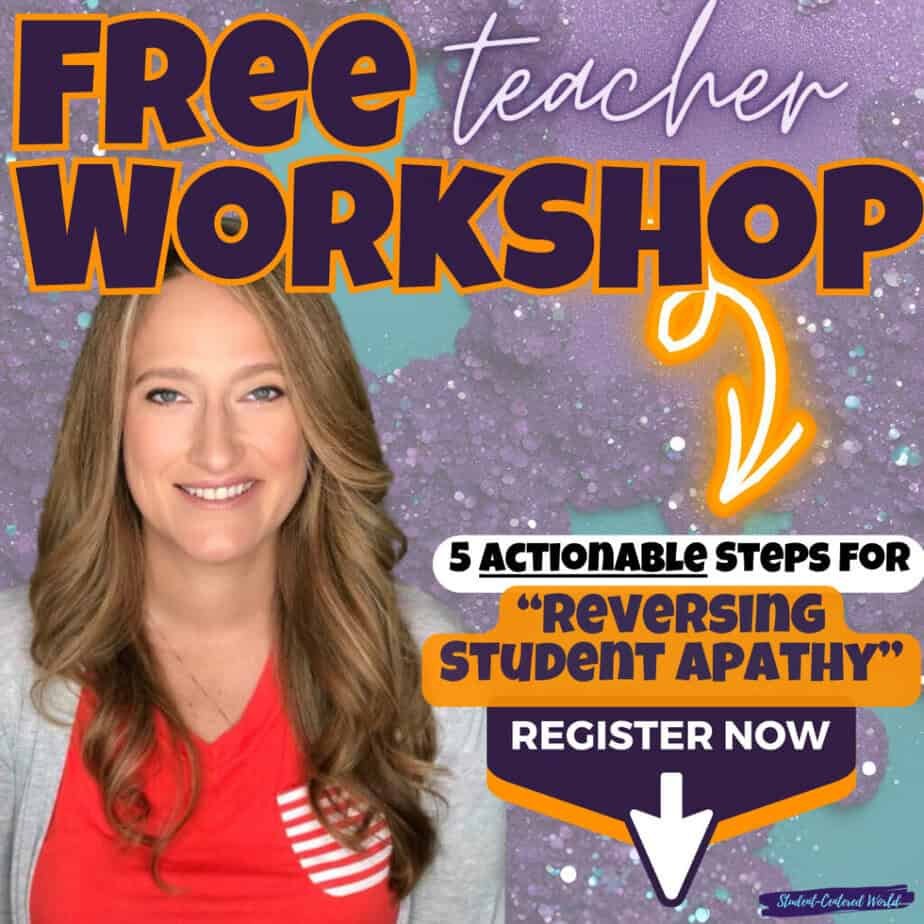
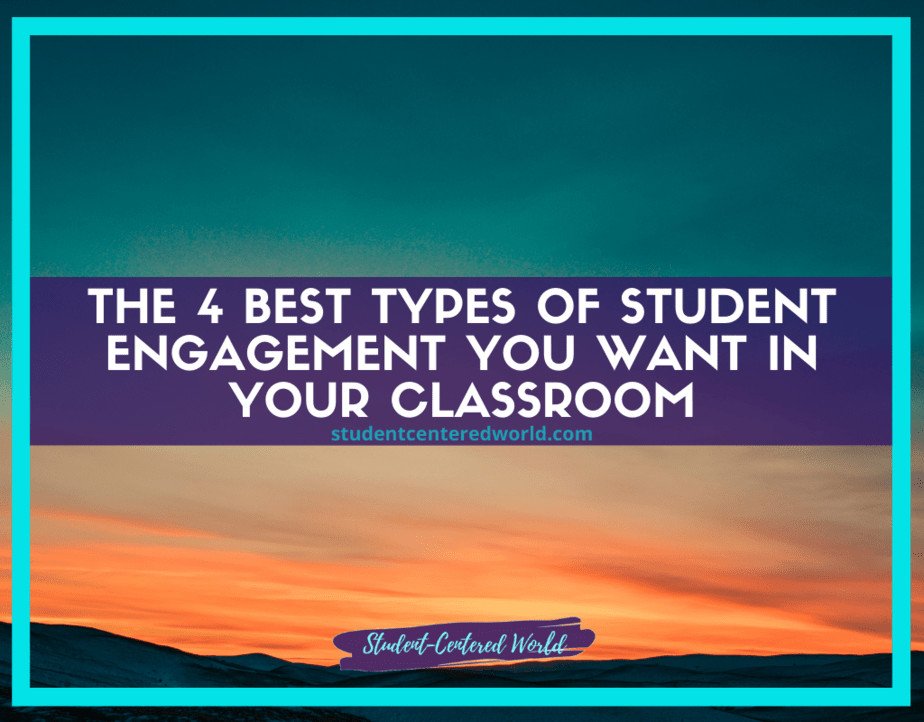
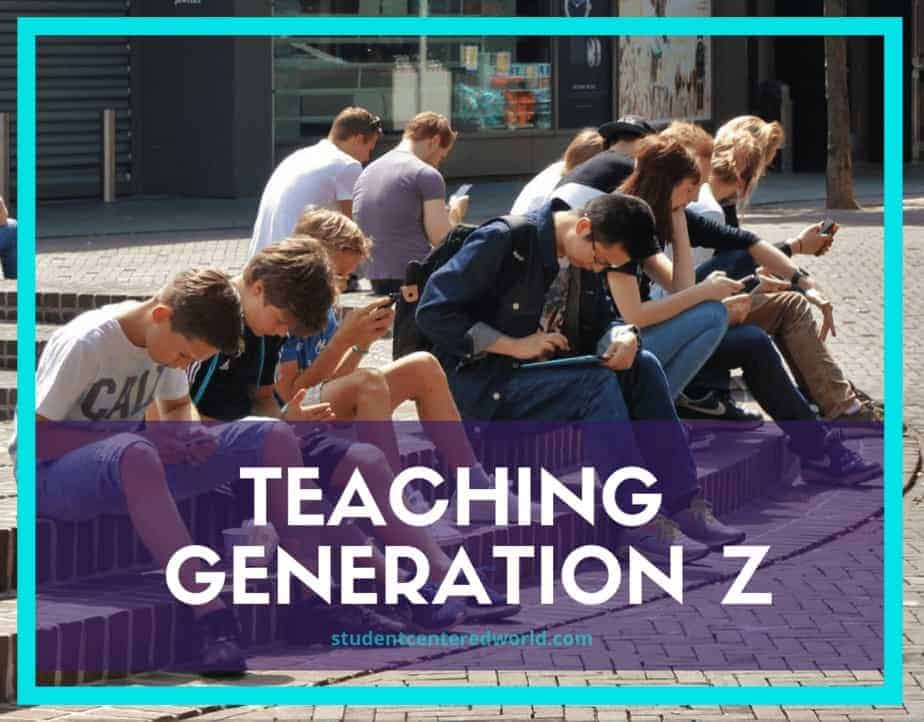

One Comment
Marie-Lou
Great post!
I love the wireless doorbell idea. I will have to try it in class.